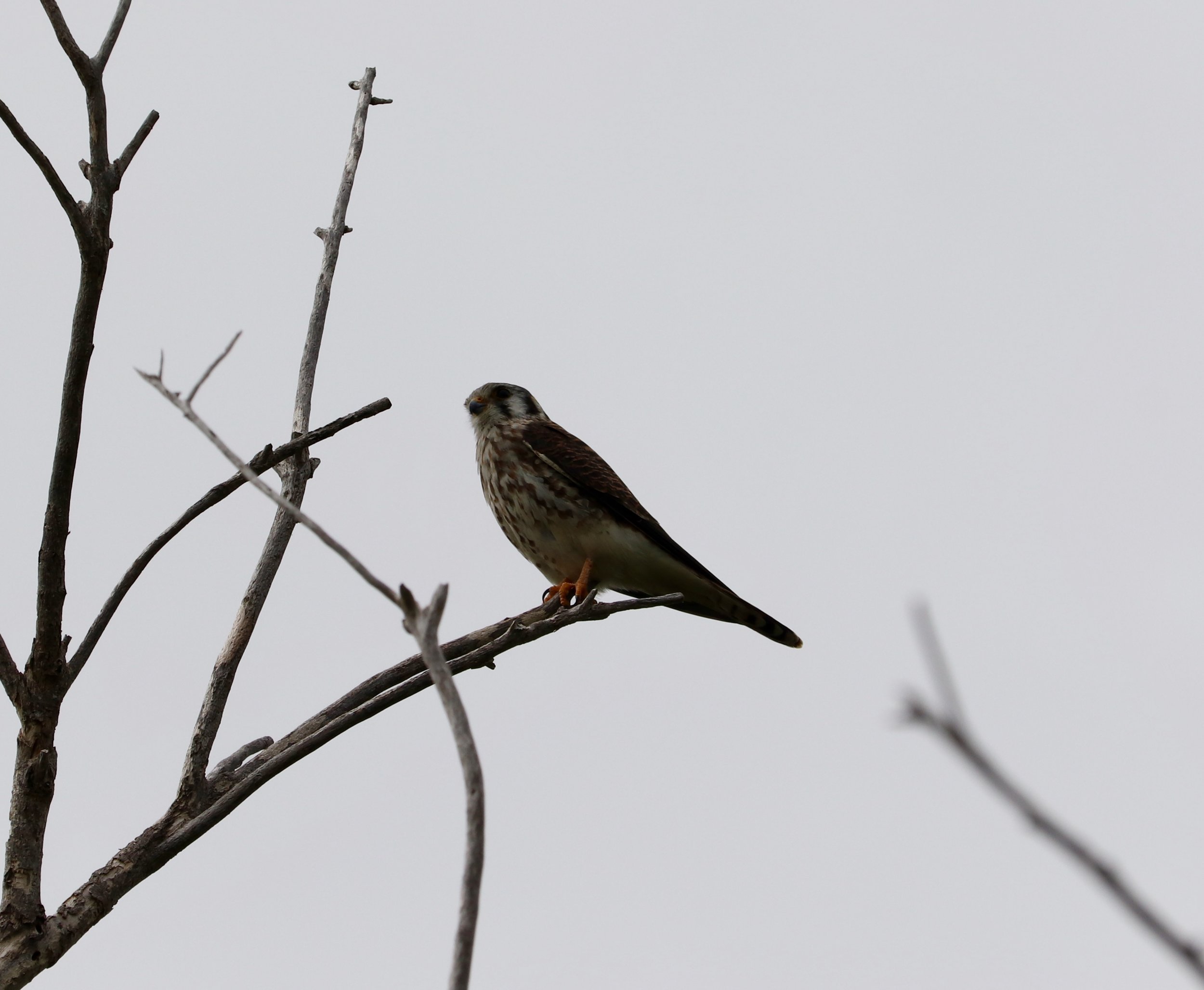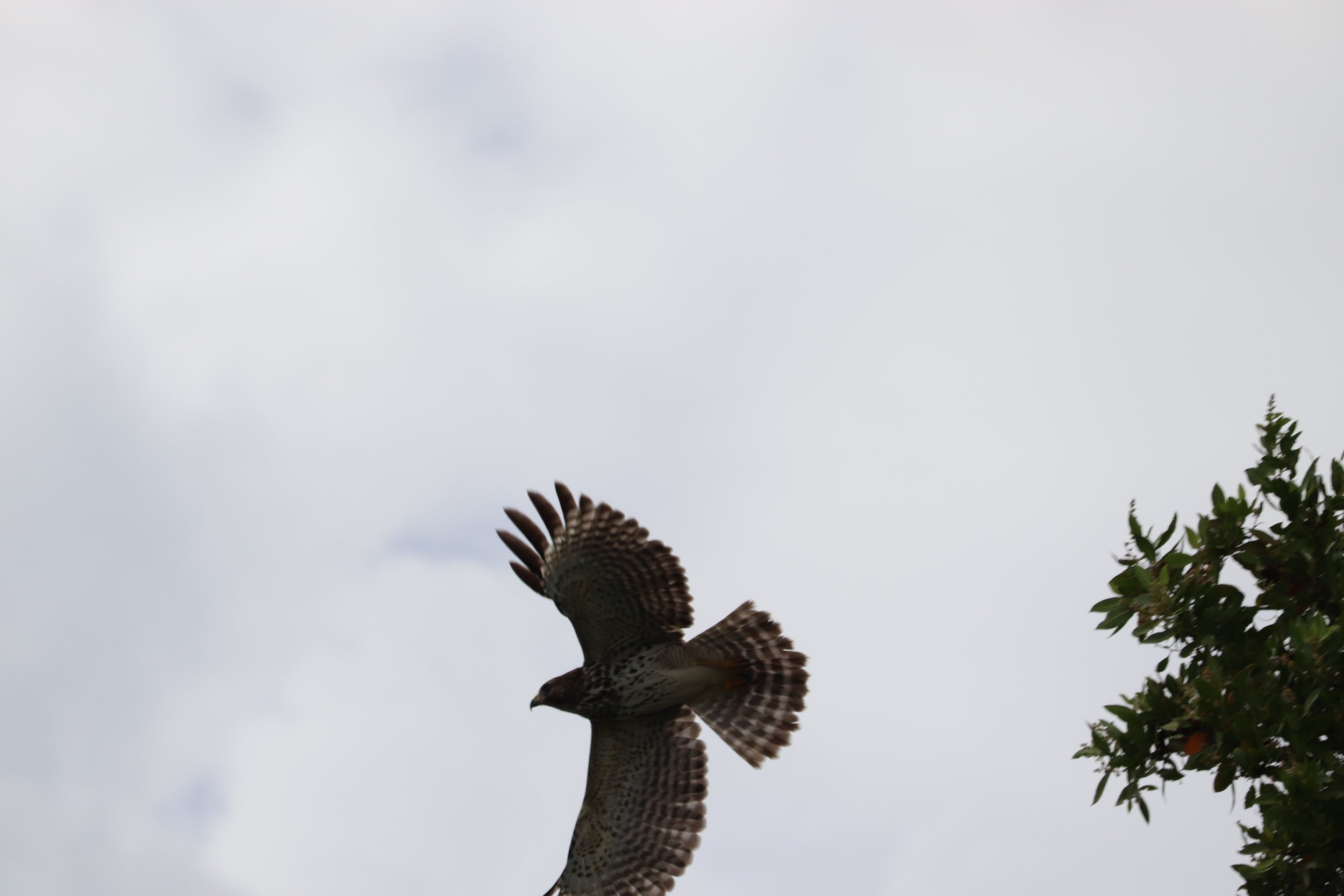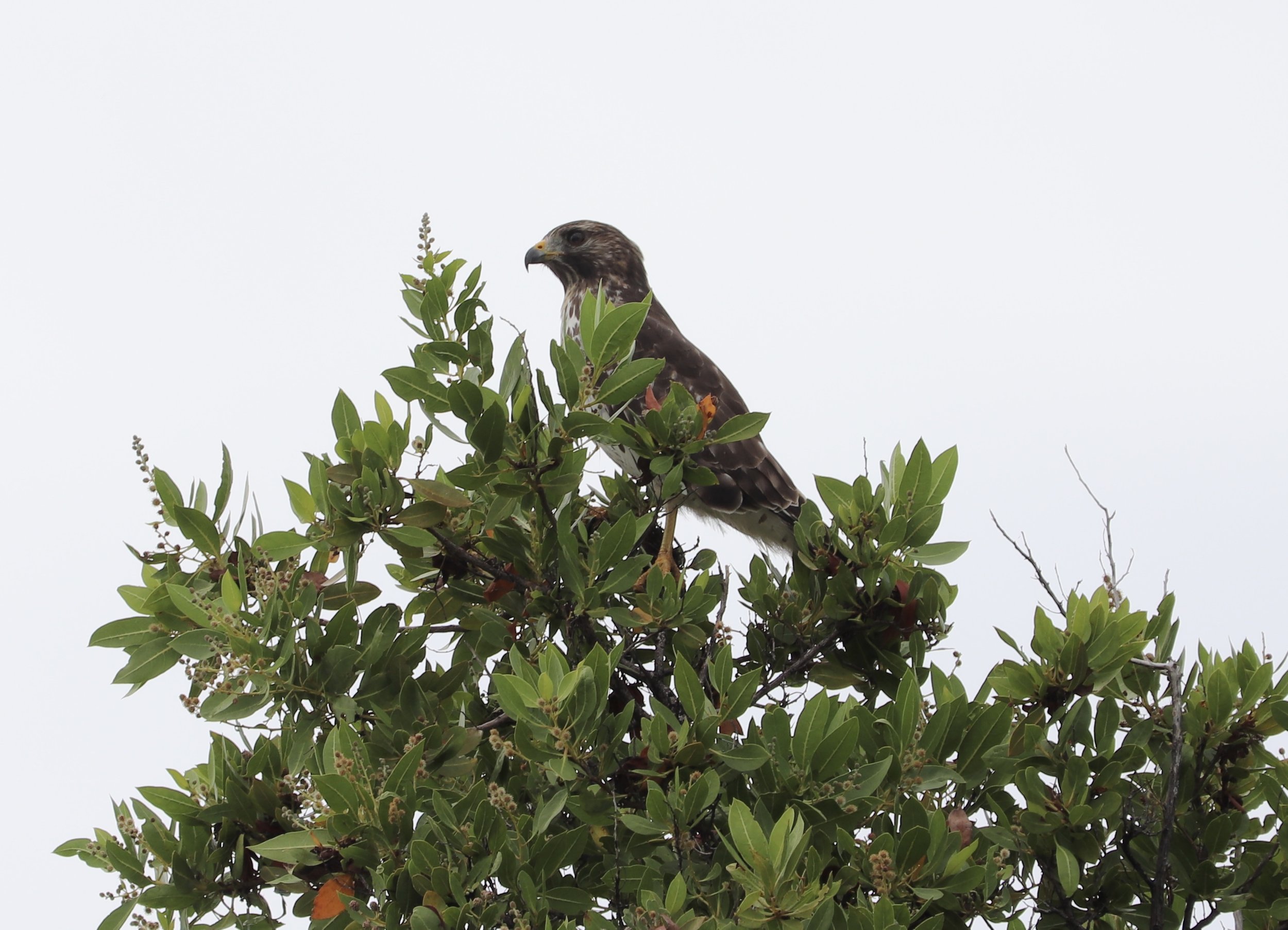Field Trip Wrap-Up: Florida Keys Hawkwatch
Bird Walk Leaders: Michele Davis & Ana Lima, Images by Ana Lima
A Phoebes Birding visit to the Florida Keys Hawkwatch is always an adventure and though heavy cloud cover factored into a quieter day than usual for migrating raptors on our October 24, 2021 outing, we learned a lot about the incredible long-running community science operation, and saw a variety of birds of prey as well as warblers and other species at Curry Hammock State Park. Highlights among the 35 species we saw included a White-crowned Pigeon, Clay-colored Sparrow and Tennessee Warbler.
Curry Hammock State Park Ranger Miranda Murphy
Our group of 18 birders was greeted by Curry Hammock State Park Ranger Miranda Murphy, who introduced us to the habitats and features of the 1,000-acre park. Located halfway between Key Largo and Key West, the park is the largest uninhabited parcel of land between Key Largo and Big Pine Key and encompasses large areas of mangrove swamp, rockland hammocks and seagrass beds.
Before we left the parking lot area, our Phoebes guide, Michelle Davis, helped the group spot a variety of warblers in a Short-leaf Fig laden with fruit attractive to migrating birds, including Tennessee, Black-throated Blue, and Prairie warblers.
Palm Warbler at Curry Hammock State Park
Up on the platform of the Florida Keys Hawkwatch we learned about raptor migration and how raptors are counted for science. Coordinators Luis Gles and Mariah Hryniewich explained how they are able to spot, identify and count raptors, sometimes hundreds a day, as they pass through the Florida Keys.
The Florida Keys Hawkwatch is dedicated to promoting the appreciation and conservation of birds by committing to the long-term study of their migration through the Florida Keys. The project currently monitors the migration of all avian species, with a focus on diurnal birds of prey from Curry Hammock State Park (mm 56.2, Overseas Highway), and the morning flights of migratory land birds from Long Key State Park (mm 67.5 of the Overseas Highway).
This year the operation kicked off early, in August, to allow counters to monitor the early-migrating Swallow-tailed Kites, and will end a month later than usual, in November.
The station holds some impressive records too. No other project in the world has documented higher numbers of Peregrine Falcons in a single day (651 on October 10, 2012) or an entire season – 3,836 during the fall of 2012.
Florida Keys Hawkwatch Counter Mariah Hryniewich shows Phoebes visitors how raptors are counted.
During our trip we saw Northern Harrier and Cooper’s Hawk, American Kestrels, and several other species. Unfortunately, heavy cloud cover made it difficult to see raptors during our visit, but it also made it easier to spy smaller songbirds and other species in the hammock and shorebirds at the beach.
One of the highlights of the day was finding a Clay-colored Sparrow, a rarity for the area. We knew one was around because Luis and Mariah had seen two earlier that week, and we were lucky enough to find one of them again on the edge of the hammock. We also got great looks at Black-and-white, Palm and Yellow-throated warblers and spied a Red-shouldered Hawk perched not too far above our heads before it took off, offering us nice views of its powerful wings.
Overall it was a great outing for newcomers and veterans alike and we hope to return to the Florida Keys Hawkwatch in the future.
(Left) A budding birder peers through a scope to see raptors during the Phoebes visit to the Florida Keys Hawkwatch at Curry Hammock State Park. (Right) Phoebes Participants at Curry Hammock State Park view raptors.






Birds We Saw
White-crowned Pigeon - 1
Common Ground Dove - 2
Mourning Dove - 2
Chimney Swift - 2
Least Sandpiper - 15
Royal Tern - 1
Magnificent Frigatebird - 10
Double-crested Cormorant - 35
Brown Pelican - 12
Great Egret - 2
Yellow-crowned Night-Heron - 1
White Ibis - 1
Osprey - 3
Northern Harrier - 1
Cooper's Hawk - 1
Red-shouldered Hawk - 1
Belted Kingfisher - 1
Red-bellied Woodpecker - 1
American Kestrel - 5
Northern Rough-winged Swallow - 30
Blue-gray Gnatcatcher - 4
Gray Catbird - 2
Northern Mockingbird - 6
Clay-colored Sparrow - 1
Ovenbird - 2
Black-and-white Warbler - 1
Tennessee Warbler - 2
Common Yellowthroat - 2
Northern Parula - 1
Black-throated Blue Warbler - 1
Palm Warbler - 12
Yellow-throated Warbler - 1
Prairie Warbler - 2
Black-throated Green Warbler - 1
Northern Cardinal - 6






